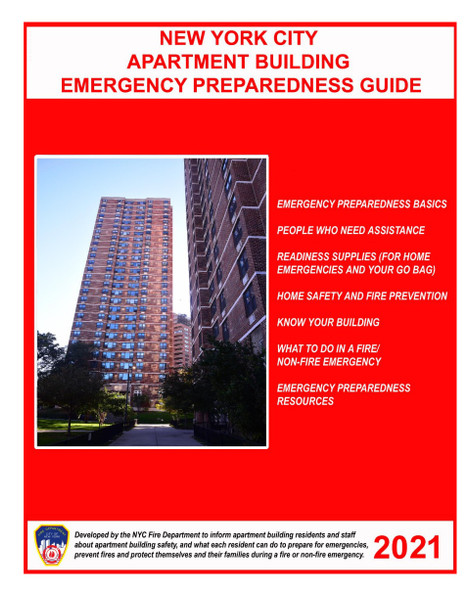hpdsigns.nyc
Commercial Building Carbon Monoxide Detector law nyc (pdf file)
- SKU:
- Commercial Building Carbon Monoxide Detector law nyc
- UPC:
- MPN:
- Commercial Building Carbon Monoxide
Description
NYC Local Law 191: Mandatory Carbon Monoxide Detectors in Commercial Buildings
In a crucial move to enhance public safety, New York City enacted Local Law 191, which requires the installation of carbon monoxide (CO) detectors in specific commercial buildings with fuel-burning appliances and fire protection systems. This law, which took effect on July 1, 2021, targets various occupancy groups, ensuring that indoor public assembly spaces, office spaces, restaurants, and stores are equipped with these life-saving devices.
Overview of Local Law 191
Local Law 191 mandates that existing commercial buildings within certain occupancy groups must install carbon monoxide detectors. This requirement applies to:
- Group A-1, A-2, and A-3 occupancies: Indoor public assembly spaces, excluding indoor sporting arenas which fall under Group A-4.
- Group B occupancies: Office spaces, including specific libraries and educational facilities.
- Group M occupancies: Retail spaces, including department stores, drug stores, and other retailers.
Scope and Applicability
The law specifically targets commercial buildings with fuel-burning appliances, as these are significant sources of carbon monoxide. The following types of spaces must comply with the new regulations:
-
Indoor Public Assembly Spaces:
- The law applies to indoor spaces used for public gatherings, such as theaters, concert halls, and banquet halls.
- Indoor sporting arenas, categorized under Group A-4, are exempt from this requirement.
-
Office Spaces:
- Office buildings, including those with libraries and educational facilities classified under Group B occupancies, must have CO detectors installed.
- This includes any space where employees or the public may be present for work or educational purposes.
-
Restaurants:
- Restaurants, which may fall under both public assembly (Group A) and Group B classifications, are required to install CO detectors.
- This ensures that both dining areas and kitchen spaces are monitored for carbon monoxide levels.
-
Retail Stores:
- Stores, including department stores, drug stores, and other retail establishments classified under Group M occupancies, must comply with the CO detector requirement.
- This measure aims to protect both employees and customers from potential CO exposure.
Importance of Carbon Monoxide Detectors
Carbon monoxide is a colorless, odorless gas that can be deadly if undetected. It is produced by the incomplete combustion of fossil fuels, commonly emitted by fuel-burning appliances such as heaters, stoves, and boilers. CO detectors are essential for early detection, providing warnings to occupants and allowing for timely evacuation and intervention.
Compliance Requirements
-
Installation Standards:
- CO detectors must be installed in accordance with the New York City Building Code.
- Detectors should be placed in locations that ensure comprehensive monitoring, such as near fuel-burning appliances and in areas where people congregate.
-
Maintenance and Testing:
- Building owners are responsible for the regular maintenance and testing of CO detectors to ensure they remain operational.
- Any malfunctioning detectors must be repaired or replaced promptly.
-
Documentation and Inspections:
- Property owners must maintain records of CO detector installations, maintenance, and testing.
- These records may be subject to inspection by city authorities to verify compliance with Local Law 191.
Impact on Safety
The implementation of Local Law 191 is a significant step toward enhancing public safety in New York City. By requiring the installation of carbon monoxide detectors in various commercial buildings, the law aims to prevent CO poisoning incidents and ensure a safer environment for occupants. Early detection of carbon monoxide can save lives, reducing the risk of fatalities and serious health issues associated with CO exposure.
Conclusion
New York City's Local Law 191 highlights the city's proactive approach to safeguarding public health and safety. By mandating the installation of carbon monoxide detectors in specific commercial buildings, the law addresses a critical safety concern associated with fuel-burning appliances. Property owners must comply with these regulations to protect their tenants, employees, and customers from the dangers of carbon monoxide. Through these measures, New York City continues to lead in promoting safer, healthier environments for all its residents and visitors.
DISCLAIMER these codes may not be the most recent version. The State / federal or other regulation department may have more current or accurate information. We make no warranties or guarantees about the accuracy, completeness, or adequacy of the information contained on this site or the information linked to on the state site. Please check official sources. The requirements for detector are determined by intended use and by applicable regulation. The BUYER is responsible for determining the appropriate detector needed. WE make no warranty or representation of suitability of a detector to any code or for any specific application. IT IS THE CUSTOMER'S RESPONSIBILITY TO ENSURE THAT THE DETECTORS THE CUSTOMER ORDERS ARE IN COMPLIANCE WITH ALL STATE, FEDERAL, LOCAL, AND MUNICIPAL LAWS. Please review terms and conditions prior to purchase. For more information about what is required, see the laws that are referenced and the rules applicable to your city and state. This page is for informational purposes only and is not intended as legal advice, professional advice or a statement of law. You may wish to consult with an attorney.
Related Products


Smoke and Carbon monoxide detector installation notice (pdf file)
hpdsigns.nyc

Carbon Monoxide Detector Installation Notice -HMC § 27-2046.1 (pdf file)
hpdsigns.nyc

Carbon Monoxide Detection Requirements NYC / HPD : 1 RCNY 908-01 (pdf file)
hpdsigns.nyc


Self closing door NYC law FLYER (pdf file)
hpdsigns.nyc


Smoke and Carbon Monoxide Alarms in Apartments and Homes (pdf file)
hpdsigns.nyc


NYC Apartment Building Emergency Preparedness Guide 2021 (pdf file)
hpdsigns.nyc













